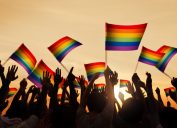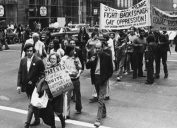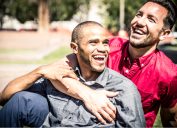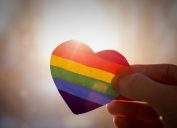Why Is It Called Pride?
Learn the history of the word "pride" just in time for LGBTQIA+ Pride Month.
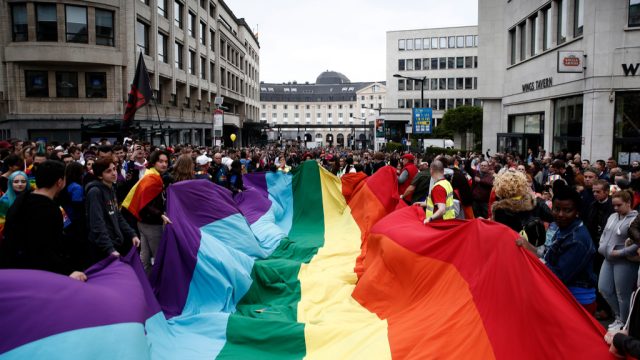
The LGBTQIA+ community has been fighting for decades to be seen and accepted. Today, the community uses the word "pride" to define several different aspects of what it means to be LGBTQIA+. From "pride" parades to "pride" groups, the word has become heavily associated with the queer community. To further understand its significance—and to celebrate the beginning of Pride Month—it's time to learn the history of the word "pride" in the LGBTQIA+ community.
"Pride" was first associated with the LGBTQIA+ community's fight for equal rights at the beginning of the 1970s with the Christopher Street Liberation Day March (named for Christopher Street, the road participants marched down in the West Village of New York City). Today, the march is called the Pride March or the Pride Parade. That's because of bisexual activist Brenda Howard, bisexual activist Robert A. Martin, Jr. (known as Donny the Punk), and gay activist L. Craig Schoonmaker, who helped popularize the word "pride" to describe this yearly commemoration of the Stonewall Riots, which, in 1969, brought national attention to the issues that queer people were facing (and still face today).
Howard also proposed extending the daylong Christopher Street Liberation Day March into a week of activism and festivities. (This week would further be extended into the month-long celebration in June that we know as Pride Month.) Because of her contributions, Howard is often referred to as the "Mother of Pride."
"We were going to create a number of events the same weekend as the march to bring in people out of town, and wanted to unite the events under a label. [The] first thought was 'Gay Power,'" Schoonmaker told The Allusionist podcast in 2015. "I didn't like that, so [I] proposed 'gay pride.' There's very little chance for people in the world to have power. People did not have power then; even now, we only have some. But anyone can have pride in themselves, and that would make them happier as people, and produce the movement likely to produce change."
By using the word "pride" to define celebrations of LGBTQIA+ expression, Schoonmaker, Howard, and Martin were attempting to defy the bigotry and hatred used against the LGBTQIA+ community and paint it as something worth celebrating. "A lot of people were very repressed. They were conflicted internally, and didn't know how to come out and be proud," Schoonmaker said. "That's how the movement was most useful, because they thought, 'Maybe I should be proud.'"
Schoonmaker told The Allusionist that during the first Pride March, which he estimates brought in 3,000 to 5,000 people, they were "chanting, things like 'Gay is good,' 'Say it loud; I'm gay and I'm proud.'" He added that it was the first time LGBTQIA+ people "were able to acknowledge themselves and be able to be out in public."
"Pride" became further associated with the LGBTQIA+ community thanks to former President Bill Clinton. In 1999, he became the first president to formally recognize Pride Month when he issued Proclamation No. 7203, declaring that the LGBTQIA+ community and its allies would "celebrate the anniversary of Stonewall every June in America as Gay and Lesbian Pride Month." Subsequently, former President Barack Obama also issued a proclamation in 2009 declaring June LGBTQIA+ Pride Month, according to the Library of Congress.
Schoonmaker said the word "pride" is still absolutely necessary for the queer community today. "It makes people more self-assertive. That's what really is going to make the change in people's lives: when they assert their rights to marry, they assert their right to be known, they assert their right to employment," he told The Allusionist. "We certainly hoped it would catch on—not as a slogan so much as an understanding that people should be proud and not ashamed." And for more facts about the history of America, discover Why We Celebrate Black History Month in February.
To discover more amazing secrets about living your best life, click here to follow us on Instagram!

